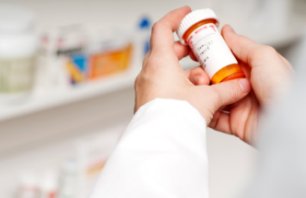When hospitals, health systems, and physician practices don’t have a solid, proactive strategy for limiting controlled substance diversion, they increase the likelihood of occurrence, which jeopardizes the safety of patients, staff, and their community. Unfortunately, many organizations struggle with how best to address this critical issue. To help, here are three action steps that can go a long way toward curbing diversion.
How to Reduce Drug Diversion in Health Care
Provide Comprehensive Staff Training on Signs of Drug Diversion
Although most health care providers are aware of the widespread opioid crisis, they may not realize how prevalent drug diversion is in facilities across the country and potentially in their own. Diversion can happen at numerous points during the delivery of health care and it is prudent to educate staff on the reality of the problem and potential areas of risk. Clinical staff should understand why it’s important to follow drug administration and disposal procedures, what those procedures are, how to recognize suspicious situations, and what to do if they suspect there is an issue. Training should include real-world examples that bring the problem to life and encourage staff to focus on prevention.
Develop Clear Procedures for Controlled Substance Waste Disposal
Controlled substance disposal can be a significant risk point for diversion. When unused or expired medications are not disposed of properly, a staff member or patient can access and divert them for personal use. As such, it is essential to have the right procedures in place, which includes making sure that disposal is witnessed by another staff member who documents that correct and complete disposal occurred. Containers that neutralize controlled drugs on contact and have a one-way disposal path are also beneficial as these can prevent diversion after disposal.
Develop a Process for Responding to Potential Drug Diversion
Despite an organization’s best efforts, drug diversion can still happen. Consequently, it is important to have processes for detecting and responding to this kind of event. This may involve assembling a team to monitor controlled drug administration and disposal. The group should be able to recognize risks, respond to staff reports and understand the steps to take when diversion is suspected.
Having strategies to help prevent, detect, and respond to drug diversion are critical to protecting patients, employees and communities. By creating effective programs for drug diversion prevention, healthcare facilities can assist in combating the opioid epidemic. Learn more about how Stericycle can serve as a valuable resource in designing a drug diversion prevention program.



